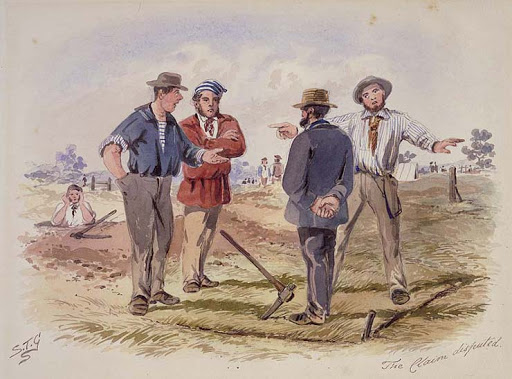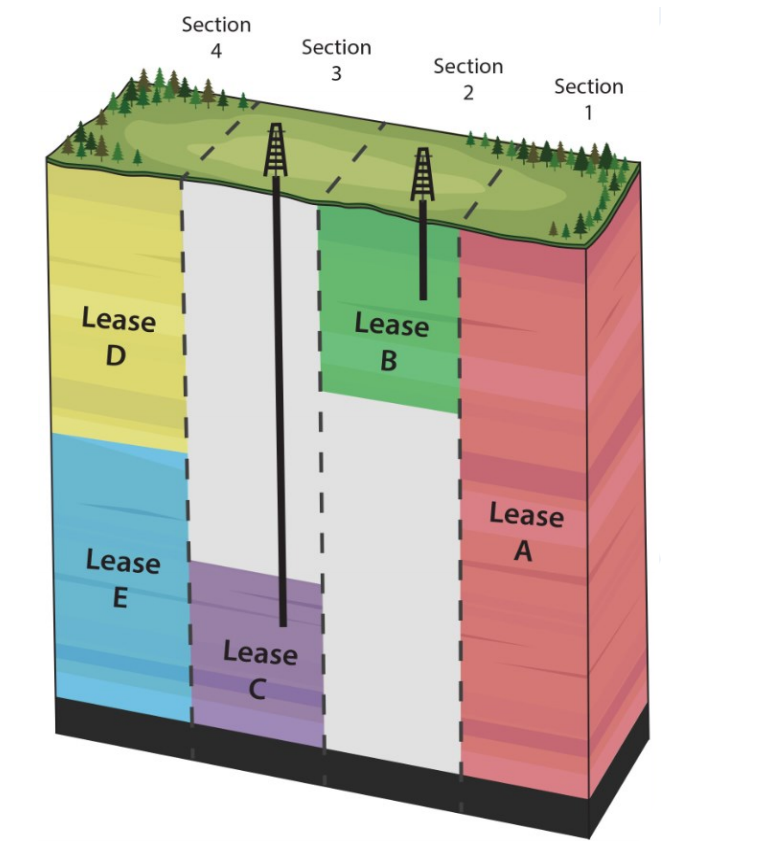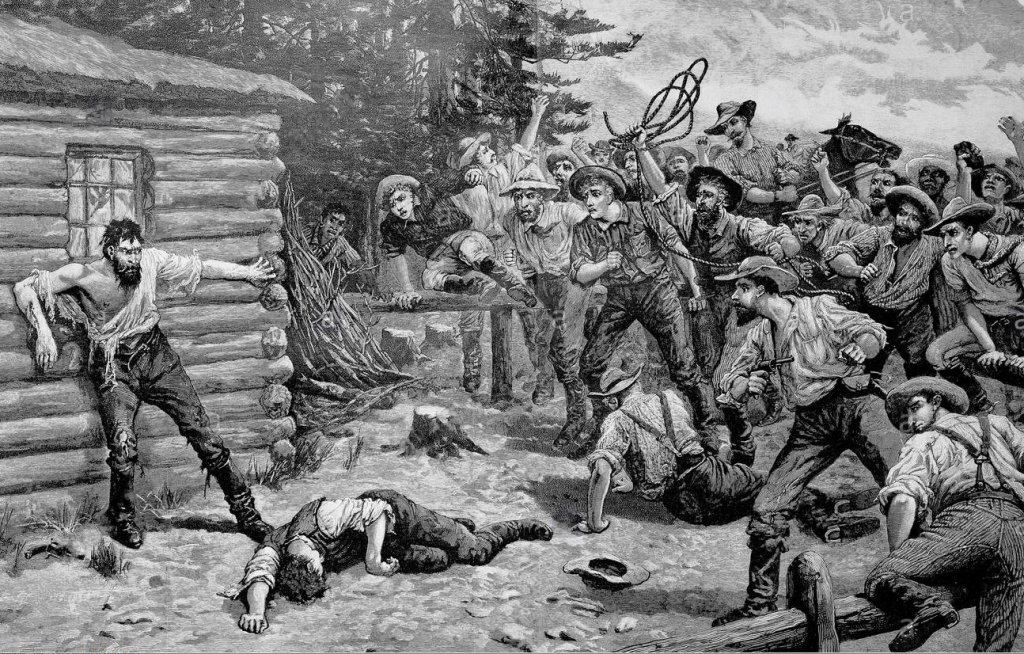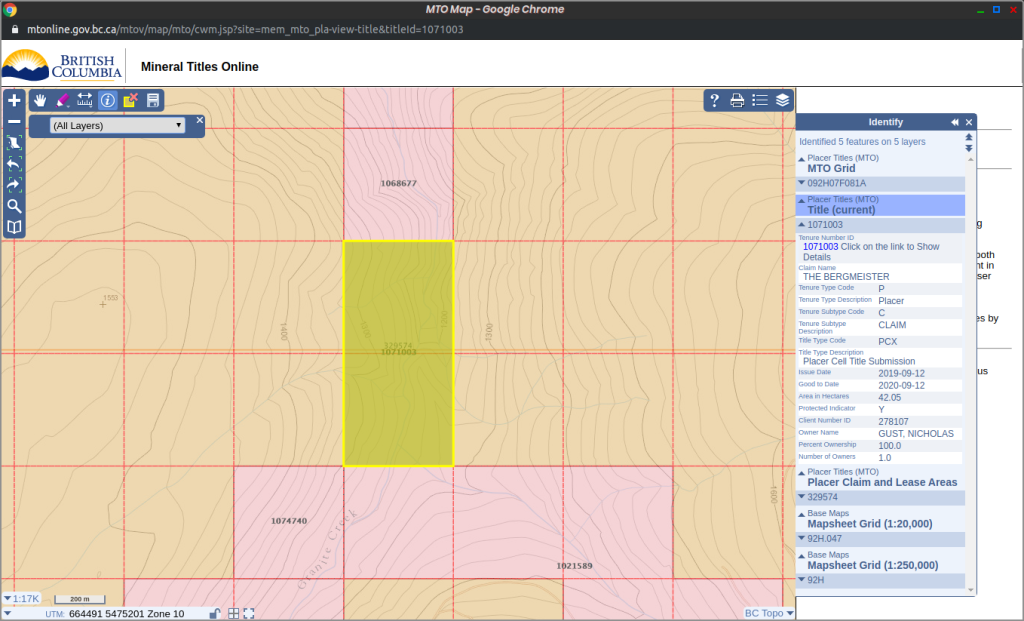Throughout mining history, there are stories of scoundrels, cheats, bandits, and liars. The gold rush towns had their share of bad actors but above everything else, there is one title that nobody wanted to have, “the claimjumper”.
In the world of mining, claimjumpers are the lowest of the low. During the gold rushes of North America miners traveled into areas where laws didn’t exist yet. In the California Gold Rush of 1849, the territory had no government, police or administration of any kind. Despite the lawlessness and disorder of the early gold rushes one thing was held sacred above everything else, the right of the miner to locate a mining claim and to hold it against all comers.
What does claimjumping mean? There are two forms of claimjumping but they both amount to the same thing:
- Producing minerals from a claim that belongs to someone else
- Attempting to seize the land on which another party has already made claim
Historically, stealing or mining ore from someone else’s mine was referred to as highgrading. While claim jumping referred to the actual seizure or taking over of someone else’s claim. Today the two terms are intertwined.
Claimjumping is illegal today just as it was in the mid-1800s and even before that. You can’t shoot a claimjumper anymore but the modern laws are quite powerful nonetheless. In British Columbia and throughout Canada you can face huge fines, jail time and being banned from the right to hold claims. As well as having to forfeit any ill-gotten minerals or profit. If, in the process of claimjumping, you break any environmental regulations or mining laws you will be on the hook for those penalties too. On top of that your equipment and even your vehicle can be forfeited if proven to be involved in the crime.
There are honest and dishonest forms of claimjumping in which the law does make a slight distinction. Honest being that you were unaware that you were engaging in claimjumping. The difference only applies in terms of repayment for the ore that was extracted, the fines and other penalties still apply whether you are knowingly claimjumping or not.
It’s difficult to find the information on Canadian claimjumping laws. Part of that comes from the fact that there isn’t an accepted term for the crime. In legal terminology claimjumping has been referred to by many titles including:
- Mineral Trespass
- Wrongful Abstraction of Ore by Trespass Workings
- Wrongful Working of Minerals
- Highgrading
- Wrongful Interference with Personal Property
- Wrongful Conversion
- Trespass and Conversion
- Willful Trespass
My favorite is “Wrongful Abstraction of Ore by Trespass Workings”, it has a certain ring to it. There are slight differences to some of those terms but they all point towards the same thing. Trespass and benefiting from something that doesn’t belong to you. Trespass is actually a complicated part of the legal system. There are different kinds of trespass. We are all familiar with what it means to trespass on private property but a mining claim isn’t necessarily private property. Perhaps we should clarify what a mining claim really is.
Trespass and Conversion
In Canada, and specifically in BC, mineral rights are held by the crown. The actual “Crown” in Canada is a story in itself but basically means that the mineral rights are owned by the people of British Columbia. When you are the holder of a mineral or placer claim, you lease the rights to those minerals for the duration of your tenure. From the issue date to the “good to date” of your claim the minerals in that plot of land belong to you and nobody else. Surface rights are a totally different story. Check out our post on Free Miners for more info on that.
Trespassing is defined as “the wrongful interference with one’s possessory rights in real property.” When it comes to claimjumping you are definitely interfering with the claimholder’s rights when you are extracting ore that belongs to them. The trespass itself is not listed as a crime under the Canadian criminal code, but it does allow the claimholder to sue the claimjumper for damages.
In Canadian law there are two ways to deal with the proceeds of trespass and conversion. The mild rule, and severe rule.
Under the mild rule, the guilty party has to pay the claim owner for the value of ore that was extracted. The costs of mining the ore, bringing it to market, etc are not included. This rule applies when the trespass (claimjumping) was not intentional.
The severe rule forces the guilty party to pay the realized value of stolen ore including the cost of mining.
Either way you have to pay back the claim owner for whatever gold you mined on his claim, the severe rule means that you have to pay the full value not accounting for the costs that you incurred in the process. The mild rule is quite lenient that way but you have to prove beyond a reasonable doubt that you commited the crime unintentionally.
There are plenty of examples of supreme court rulings where the trespasser had to pay back the claim owner for their ill-gotten gains. Here is an example from 1907 in the Yukon in which one miner produced ore an another miner’s claim and mixed the ore with his own.
Here’s some info on a more recent case in the Yukon. I actually worked with one of the miners in this story in Klondike back in 2010, I won’t say which one though.
Claimjumping supreme court cases are common in Alberta although the claimjumping takes a slightly different form. These cases are regarding mineral rights for oil instead of precious metals but the concepts are the same. In Alberta, mineral rights are divided by different sedimentary layers that contain petroleum. So different companies can own the mineral rights in the same location but at different depths. Due to the complexities of this system, companies drill into other company’s leases all the time.
The consequences of mineral trespass vary, but the Alberta Energy Regulator introduced a penalty of $50,000 per occurrence. In addition to the penalty, compensation is owed for the value of any minerals obtained during trespass. Alberta mineral trespass is treated the same in a legal sense as gold claims in BC just with a much higher frequency of settlements.
Miner’s Meetings
During the gold rushes you couldn’t file a complaint to any governing body. Miners took justice into their own hands and had a form of democracy called Miner’s Meetings. The meetings were notorious for their swift justice but they were considered fair. In order to participate in a miner’s meeting you had to be the holder of an active claim.
A journalist named Baryard Taylor gave this account of the situation in the California Gold Fields in 1849:
In the absence of all law or available protection, the people met and adopted rules for their mutual security rules adapted to their situation, where they neither had guards nor prisons, and where the slightest license given to crime or trespass of any kind must inevitably have led to terrible disorders. Small thefts were punished by banishment from the placers, while for those of large amount or for more serious crimes, there was the single alternative of hanging.
As gold rushes progressed further North the miners took their knowledge and customs with them. During the Fraser River gold rush, the miners brought with them knowledge of mining placer gold with long toms, rocker boxes and hydraulic mining as well as their own customary law that had spontaneously developed in the California Goldfields.
During the Fraser River gold rush each bar had it’s own set of rules which were democratically chosen by the miners.
The Daily Alta California published the laws passed by a miners’ meeting held on May 12th, 1858 on Hill’s Bar, Fraser River, which included:
- Claim sizes were defined as twenty-five feet along the river bank’s high water line for each person.
- Miners were restricted to to one claim by preemption and one by purchase.
- Claims were “not considered workable” between May 20th and August 20th.
- During the non-workable period the work requirement was removed.
- During the workable times claims must be “represented”, or worked, within three days or they were otherwise free to be jumped.
- There was a regulation declaring that any thieves or claimjumpers would be expelled from Hills Bar and lose their claims.
- And anybody “interfering with or molesting any Indian” would be punished as “the community shall see fit.”
Just up the river at Yale, the rules were slightly different:
- There was a rule concerned with equality, limiting miners from holding more than one claim.
- A one-day work requirement every five-days was established.
- The office of recorder was created to keep track of claim registration.
- Proven claimjumpers were to be banished from the placers and have their claims and gold forfeited.
All along the Fraser, mining communities drew on norms established in California to regulate society on the lower Fraser. This community didn’t legitimate itself based on an external authority. Instead, the miners assumed their own legitimacy and authority.
Miner’s meetings progressed into miner’s boards which were legislated under the Goldfields Act in 1859. The miner’s boards stayed in place until 1888.
More remote areas still used the principles of the miner’s meeting since police presence and regulations were often slow to follow the prospectors. Here’s an account of the legal landscape in the notorious Circle City which is situated just over the Alaska border from the Klondike by Arthur Walden in 1896, two years before the brunt of the Klondike Gold Rush:
Here was a town . . . which had no taxes, courthouse, or jail; no post-office, church, schools, hotels or dog pound; no rules, regulations, or written law; no sheriff, dentist, doctor, lawyer, or priest. Here there was no murder, stealing, or dishonesty, and right was right and wrong was wrong as each individual understood it. Here life, property, and honor were safe, justice was swift and sure, and punishments were made to fit the case.
Eventually communities grew, the North West Mounted Police set up outposts and federal and provincial laws began to take over. The days of frontier justice faded into the background but many of the principles that the miner’s meetings established made their way into legislation.
Current Laws
In the United States many individual states have clear laws regarding claimjumping, or as it is now referred to “mineral trespass”. They vary from state to state but almost all have similar rules on the proceeds of mineral trespass.
For example when a willful trespass occurs in Colorado, the trespasser is not entitled to set off the mining costs. In addition Colorado allows punitive damages for “Willful and Wanton” trespass claims. Punitive damages are a fancy word for additional fines to punish the defendant for outrageous conduct. That is uncommon in Canada.
US penal codes clearly list claimjumping as a crime which isn’t quite as easy to find in Canada. For example in Washington state Mineral Trespass (RCW 78.44.330) is considered a class C felony which carries a punishment of up to 5 years in prison and up to $10,000 in fines
In British Columbia, claimjumping falls under our Mineral Tenure Act. There are two sections of the law that deal with claimjuping:
9(2)A person must not hand pan on a valid mineral title unless the person receives permission from the recorded holder of the mineral title.
As well as
28(1)Subject to this Act, the recorded holder of a claim is entitled to those minerals or placer minerals, as the case may be, that are held by the government and that are situated vertically downward from and inside the boundaries of the claim.
(2)The interest of a recorded holder of a claim is a chattel interest.
Punishments are listed under section 63 of the Act, which states:
63 (1) A person commits an offence who does any of the following:
(a)wilfully and without lawful excuse pulls down, defaces, alters or removes a staking or legal post, a legal corner post or other survey monument;
(b)explores for, develops or produces minerals contrary to this Act or the regulations;
(c)knowingly makes a false statement or provides false information under this Act, or in a registration;
(d)offers for sale, or sells, a mineral title for a non-mining usage.(3) A person who is convicted of an offence is liable to a fine of not more than $25,000 or to imprisonment for not more than 6 months, or to both.
The following activities are in violation of the Mineral Tenure Act and will result in criminal charges:
- Panning on a mineral claim or placer claim without permission
- Producing minerals or placer minerals from an active claim by any means, pan, sluice, shovel, dredge, or even your bare hands.
- Removing rocks or minerals from a claim, either rockhounding or for any other purpose.
In addition to a potential fine of $25,000 or 6 months in prison, anyone who is proven to be claimjumping will lose their FMC and any claims for a period determined by the Gold Commissioner. That means that you can lose your free miner rights for life and no longer be able to own claims.
A person guilty of removing minerals from a claim is guilty of theft under the Criminal Code of Canada. Section 334 of the criminal code states that theft under $5000 carries a prison term not exceeding two years. For theft over $10,000, a prison term not exceeding ten years.
The Criminal Code of Canada has provisions for selling unrefined ore and specific laws regarding fraud of unrefined ore. If you are engaged in claimjumping it will be difficult and illegal to sell your ill-gotten gold. Precious metal assayers and buyers know these laws and will not accept placer gold unless you can prove the source.
394(1) (b) of the Criminal Code, makes it an offence for anyone to sell or purchase any rock, mineral or other substance that contains precious metals “unless he establishes that he is the owner or agent of the owner or is acting under lawful authority”.
The punishment for violation of that part of the Criminal Code states:
A person who contravenes subsection (1), (2) or (3) is guilty of an indictable offence and liable to imprisonment for a term of not more than five years
In addition to the fines and penalties for those caught in the act of claim jumping you can also be on the hook for any illegal mining or environmental practices that you conduct. The mining and environmental laws are extensive but I’ll list a couple common ones here.
There are a lot more environmental inspectors than there are mining inspectors. They are likely the ones to catch you.
The most common fine is under Environmental Management Act Section 6(3) which states:
a person must not introduce or cause or allow to be introduced into the environment, waste produced by a prescribed activity or operation.
The standard fine for a small highbanker or river sluice is $575. You can see a list of some of the most recent fines here.
In his book Poachers, Polluters and Politics: A Fishery Officer’s Career, former fisheries officer Randy Nelson recounts on an incident where he caught some claimjumpers operating an illegal dredge in the Cariboo:
It was two days before Christmas, I had just caught up with a pile of paperwork and I decided to go for an afternoon patrol North of Quesnel. I crossed the Cottonwood River on Highway 97 North and climbed the big hill from the river valley. I glanced down a side road and saw a parked pickup truck with fresh footprints leading away from it down the snow-covered road.
It could have been any number of activities but I decided to check it out. I walked through the deep snow for over a mile, climbing along the upper banks of the Cottonwood River. The tracks finally turned off and headed downhill toward the river where I could hear a small motor running. Surely no one would be dredging for gold in this salmon stream in the winter?
They were so surprised I’m not sure their wet suits remained dry. They said, “Don’t you ever take time off? We never dreamt you’d be working this time of year or walk into this spot” I took it as a compliment and made sure to to pass that information on to the judge.
There wasn’t much the two of them could say. They were caught and one had a previous conviction. I seized everything at the site, including their dredge, gold dry suits, diving gear and tools. I loaded whatever I could carry and walked out with them out to their vehicle. I told them I would give them a ride home because I was seizing their truck too. Merry Christmas!
It would have taken several days to dismantle and pack the dredge out from the river and it was two days before Christmas so I hired a helicopter to sling the gear out from the river. The two miners were convicted in court and received fines of $3,000 each plus forfeiture of $4,000 worth of gear.
That was a bad day for those two claimjumpers. In situations where you are running bigger equipment that requires a Notice of Work permit (NOW) you can get into a whole bunch of fines and penalties. In a recent Mines Act decision a mine in the Cariboo was fined $28,000 for operating without a proper permit.
How can you avoid claimjumping?
Just like any other law in Canada your ignorance of the law does not exempt you from it. That means that if you are gold panning, mining, rockhounding, or producing mineral of any kind it’s up to you to understand the laws and claims in that area.
Before you go out gold panning make sure that you’re not on someone else’s claim. The best place to check is the BC MTO website (mtonline.gov.bc.ca). That is the website run but the Mineral Titles Branch of BC’s Ministry of Energy, Mines & Petroleum Resources. The MTO maps are a bit daunting to a newcomer but all the information is there.
Local mining laws can take a bit to understand at first but you can always email or phone the MTO with any questions.
Claims are rarely marked in the field since BC now has an online staking system. If you are out gold prospecting a GPS is just as important as your gold pan these days. Make sure your maps are up to date and you know how to use your GPS.
The best place to prospect is a panning reserve, your own claim, or a claim where you have permission from the owner. If you aren’t certain that you’re operating legally then don’t start digging.
In summary, these are the penalties for claimjumping in BC:
- Repayment for full value of the ore that was stolen
- $25,000 fine or 6 months in prison; Mineral Tenure Act
- 2 to 10 years in prison for theft, plus summary conviction; Criminal Code of Canada
- Loss of FMC, potentially for life; Mineral Tenure Act
- Up to 5 years in prison for selling ore without proving the source; Criminal Code of Canada
- Fines for violation of mining and environmental laws
- Possible confiscation of mining gear and your vehicle
Modern-day prospectors and miners work hard to explore their claims. It takes time and money to locate a claim, stake it and begin exploration work. There are hurdles to operate a mine legally. Most miners put a lot of effort into setting everything up properly so that they can mine and reap the benefits of their hard work. Claimjumpers try to cut corners and steal resources from the people that have done the hard work. There’s a reason that nobody wants the earn the title of “claimjumper”.
You can’t be banished from the land or hung you like they did during the gold rushes but you will have to repay all the gold you steal and face penalties for your crimes.






I, and many other INNOCENT victims in the Salmon River, CA basin, have had problems with this guy for approximately 20 years. Look at the prices of his claims! You decide if it is ethical!!
Hi Chad, I edited your post to remove the link. If you post the link you will actually be promoting his site and I don’t think you want that.
I agree that it’s unethical but it’s a free market and if people want to pay those prices, it’s up to them. I do think they should bring back the rules that were in place during the gold rush stating that if you abandon your claim for more than 3 days, it’s automatically forfeited. Claims should be worked not flipped.
There are several issues with claim jumping that you fail to mention. One is that a claim owner has no rights of the surface (Real Property) and claim owners can not ask people to leave their claim *unless the surface rights are owned too. i just went through this with a previous claim partner who threatened a hunter as well as put up no trespassing signs….as a prospector you can be found guilty of squatting and fined more than claim jumpers. Secondly, there are scenarios that are VERY hard to prove. i.e. hikers are camping on your claim (as previous., you cant stop them), one of them goes to the creek to wash out a frying pan and uses sand to scrape off the dried egg….looks suspiciously like panning but in Canada you are still innocent until proven beyond a reasonable doubt and proving the hiker was in fact panning would be near, if not completely impossible. You notice the hiker slide a huge gold nugget into his pocket…..you cant stop them or detain them, if you do its illegal confinement. All you can do is get within cell range and call the police or gold commissioner. At that point, even if they are caught with the gold you have to *prove its not a keepsake that deceased uncle joe didnt give you and that it actually came from your claim. The police can’t legally seize it without proof or a warrant and chances are by the time the police catch them the 3 ounce nugget is now well hidden in their heater ducting in their car. I know of a hundred instances where prospectors have taken things too far by not know the ‘color of law’ and instead of the *suspected claim jumper* getting a fine the claim owner is the one who loses their FMC and vehicle or worse. One claim owner on the 90’s went to jail for 5 years for illegally pointing a loaded shotgun at someone he suspected had jumped his claim. A year later the claim owner had to forfiet the claim and the suspected claim jumper ended u registering and owning the claim. Last notes: No one like claim jumpers but KNOW ALL OF THE LAWS before assuming someone is stealing you gold….and get proof….video of the illegal activity, photo’s of foot prints, tire tracks etc and study “How to build a case against a party or parties” you can find the info in any courthouse in BC…..and before calling the police make sure you don’t have any un-permitted holes deeper than 1.2 meters deep…..ive seen that backfire on miners too.
You are 100% correct that a mineral or placer tenure does not give you rights to the surface. Claimjumping is not just trespassing (in the private property sense) on a claim. I think that was pretty clear in the article. I might add a bit to the article in case that’s confusing to people.
You are also correct that it requires a lot of evidence to prosecute people for actual claimjumping. You require clear evidence and even then it’s a challenge.
The correct approach is not to take the law into your own hands. If you have sufficient evidence call in the RCMP and the DFO. It’s important to call the DFO as well since they are the ones that will seize the claimjumpers equipment and issue fines. The RCMP aren’t generally up to speed on mining or environmental laws.
What about picking up a rock from the surface on a mineral claim? If there are no rights to the surface, does that mean that anything lying on the ground within claim boundaries is fair game for anyone who finds it? Thanks for the article. I really enjoyed it.
That’s sort of a grey area. Legally you can enter a claim as long as it’s on crown land.
You can technically pick up a rock however if you have to dig for that rock or it’s a mineralized rock containing precious metals you’d be breaking the law. If you engage in any sort of mining activity while on that claim without permission you are breaking the law, which includes gold panning.
Just to clarify, a mineral tenure gives the holder the rights to all minerals on that claim. If you take minerals from the claim then you are guilty of theft and in violation of the mineral tenure act.
It’s best to not enter active claims for that purpose. If you’re there to go fishing or something that’s legal and OK.
Just to clarify, a claim holder does not own rights to all minerals on their claim. A placer claim owner does not own the hard rock minerals, and a mineral claim owner does not own the placer minerals on their claim.
That is correct. The definitions of those are important to understand as well.
Placer minerals are those naturally occurring metallic and non-metallic minerals found in alluvial deposits formed by the action of water. This includes not only valuable metals like gold and platinum but also precious and semi-precious gemstones such as diamonds, garnet and placer jade that are found in riverbeds, streams, and other sedimentary environments.
Minerals in the context of lode or hard-rock mining are naturally occurring substances with a definite chemical composition found in the earth’s crust. This category encompasses a broad range of minerals, including both metallic ores (like copper, iron, and zinc) and non-metallic minerals. Importantly, it also includes precious and semi-precious gemstones such as emeralds, sapphires, and jade, which are typically found in hard-rock formations.
What about people new to this and want to try it out? I find all of this confusing and I don’t want to break the law. I live in an area where there are no panning reserves. So what is a NEW person to do? Where do they start? How can they go about learning to pan if everywhere is ‘claimed’ or how can you find if an area is claimed? Can you contacted a claim owner and say you want to ‘play’ around (and what is the likelihood of them allowing that)?
Good questions. First of all, as the old saying goes “ignorance of the law does not absolve from responsibility.”
It is your responsibility to check whether an area is claimed or not. The place to do that in BC is on the MTO website: https://www.mtonline.gov.bc.ca/
Now, the MTO site is not the most user friendly site. The government needs to do a lot better in that regard but you still must determine if an area is staked or not. The MTO site does provide information about current tiltes as well as contact information for title holders, its cumbersome but it is there. There are some youtube videos that explain the process in detail and I recommend that you seek them out.
In BC you can legally pan anywhere that is on crown land and not claimed by someone else. That includes mineral or placer claims, so as long as there are no claims, parks, or Indian reserves you’re good to go. If you are a free miner you can give notice to explore private property even if you don’t hold a claim there. You don’t need their permission to do so, you are only required to give advance notice.
A lot of claim holders will allow you to pan on their claims but you must ask permission in advance. BC is a huge place and only small amounts are covered by claims, parks, and reserves. With a little research, you can defiantly find a place in your area to do some panning without breaking the law.
If a person is a few days late on making the $20 tax payment to the BLM office in Denver Colo. On a mining claim of his. Can another person come in and pay the required fees and take your claim away and knowingly . Is he breaking the law and if so what can he be chgarged with. He also was vwry aware of doing his best to make sure i didnt have my claim any more
If i own the land and can’t find any information on severed rights can somebody come on my property and steak a claim Saying that they on the mineral rights and they bought them
That’s correct. They would not just be saying that they have the mineral rights, they would legally have the mineral rights over your private property.
If you don’t want that to happen then you should stake the claims yourself to prevent others from staking them.
Very few private property parcels in BC hold mineral rights. There are a small amount of lots that still hold pre-emption rights but they are rare. In all other cases mineral or placer claims staked over private property hold the mineral rights.